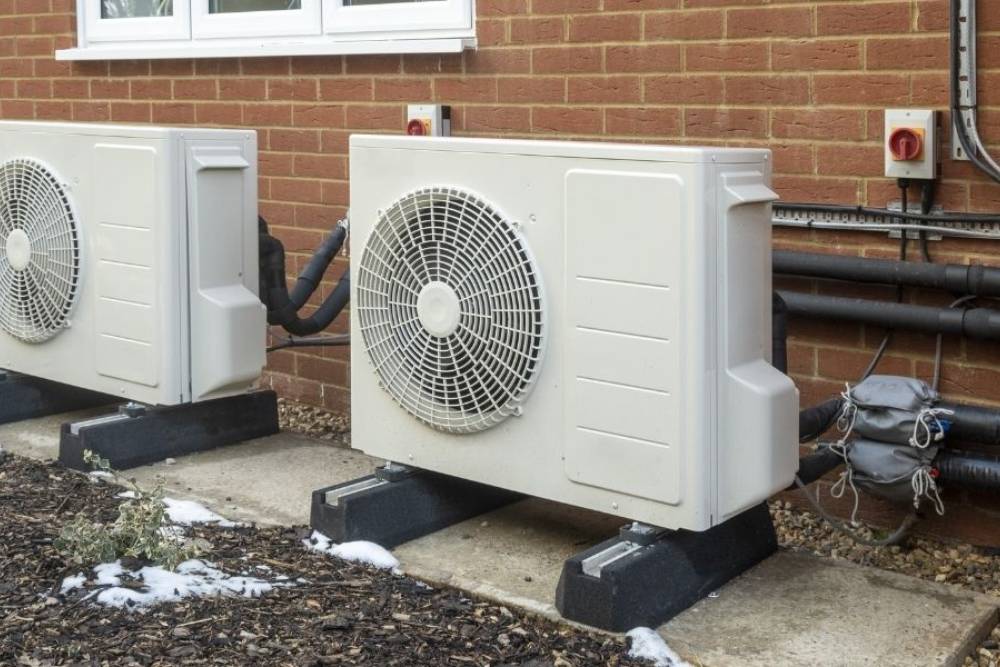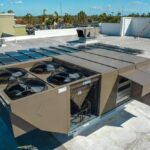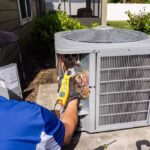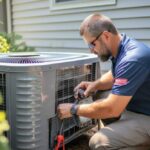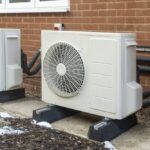Table of Contents
- Central Air Conditioning Systems: Reliable and Familiar Comfort
- Heat Pumps: Efficient Heating and Cooling in One
- Ductless Mini-Split Systems: Flexible, Zoned Comfort
- Comparing Energy Efficiency: Central Air vs. Heat Pump vs. Ductless
- Installation and Maintenance Differences
- Central Air vs. Heat Pump vs. Ductless: Cost Considerations
- Central Air vs. Heat Pump vs. Ductless: Which System Is Right for You?
- How Rescue Heat & Air Can Help
- Ready to Upgrade Your Comfort System?
When it’s time to upgrade your home’s comfort system, you’ll likely encounter three main options — central air, heat pumps, and ductless systems. While all three can keep your space cool (and in some cases, warm), they operate differently, offer unique advantages, and suit different types of homes and budgets.
At Rescue Heat & Air, we help homeowners across Oklahoma choose the right system for their needs. Let’s break down how each system works, their pros and cons, and how to decide which one’s best for your home.
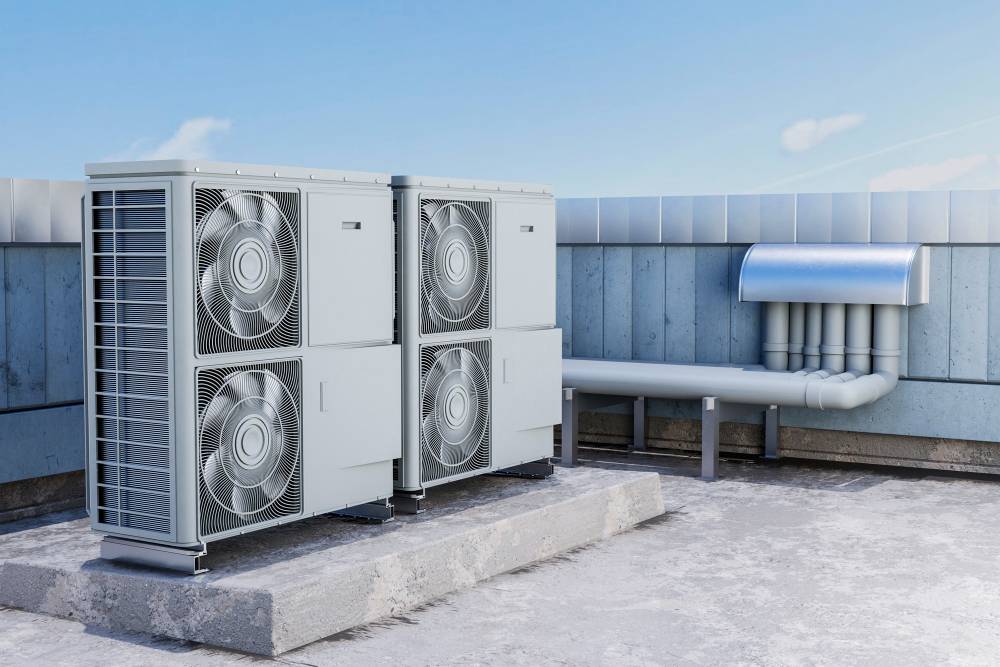
Central Air Conditioning Systems: Reliable and Familiar Comfort
Central air systems are the traditional choice for many Oklahoma homes. They use a network of ducts to distribute cooled air throughout your house, powered by a single outdoor condenser and indoor air handler connected to your furnace or air handler.
How It Works:
Central air pulls warm air from inside your home, passes it through an evaporator coil where the refrigerant absorbs heat, and then redistributes cooled air through ductwork.
Pros:
- Consistent cooling for the entire home
- Works well for large spaces with existing ductwork
- Compatible with modern smart thermostats
- Quiet, balanced operation
Cons:
- Requires duct installation and maintenance
- Can lose efficiency if ducts are leaky or dirty
Best For: Homes with existing ductwork that need reliable, whole-home cooling.
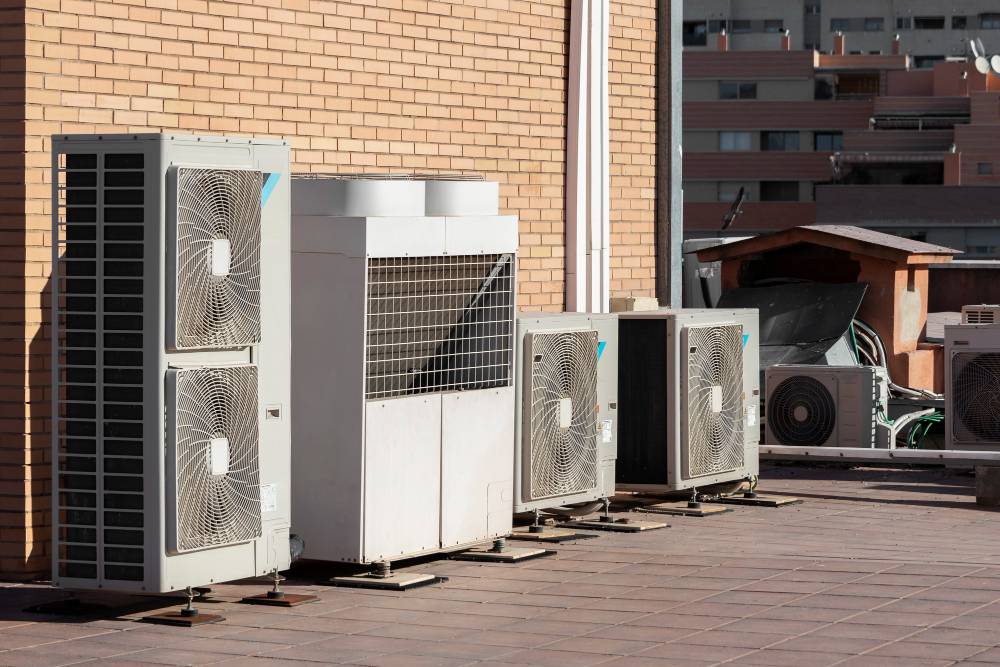
Heat Pumps: Efficient Heating and Cooling in One
Heat pumps are increasingly popular for their energy efficiency and dual functionality. Unlike a central air conditioner, a heat pump can both cool and heat your home by transferring heat rather than generating it.
How It Works:
- In summer: The system works like an air conditioner, moving heat from indoors to outdoors.
- In winter: It reverses the process, extracting heat from outside air (even in cold temperatures) and bringing it inside.
Pros:
- Provides both heating and cooling
- Extremely energy efficient — uses up to 50% less electricity than electric furnaces
- Environmentally friendly — reduces carbon emissions
- Consistent comfort throughout the year
Cons:
- May require backup heating in extreme cold
- Slightly higher upfront cost than a central AC
Best For: Homeowners who want one system for year-round comfort and lower energy bills.

Ductless Mini-Split Systems: Flexible, Zoned Comfort
Ductless mini-split systems are perfect for homes without existing ductwork or for adding climate control to specific areas — like garages, home offices, or room additions.
How It Works:
Each indoor air-handling unit connects to an outdoor condenser via a small conduit. You can control each indoor unit individually, giving you zoned temperature control.
Pros:
- No ducts required — ideal for older or smaller homes
- Zoned comfort for different rooms
- Energy efficient, since there’s no air loss through ducts
- Easy to install and maintain
Cons:
- Upfront installation cost per zone
- Indoor units are visible on walls
Best For: Homes without ducts or where you need targeted comfort control in specific areas.
Comparing Energy Efficiency: Central Air vs. Heat Pump vs. Ductless
Energy efficiency is a top concern for homeowners — especially with rising energy costs. Here’s a quick look at how the three systems compare:
| System Type | Typical SEER Rating | Heating Capability | Ideal For |
| Central Air | 14–20 SEER | Cooling only | Homes with ducts |
| Heat Pump | 16–22 SEER | Heating & cooling | Energy-conscious homes |
| Ductless | 18–30 SEER | Heating & cooling | Zoned comfort or older homes |
Modern heat pumps and ductless systems tend to outperform central AC units in terms of energy efficiency, especially when used year-round.
Installation and Maintenance Differences
- Central Air: Requires professional installation and duct maintenance every few years.
- Heat Pumps: Need routine servicing twice a year for optimal performance.
- Ductless Systems: Quick installation (1–2 days) and easy filter cleaning by homeowners.
Each system benefits from annual tune-ups to maintain efficiency and prevent costly breakdowns — something Rescue Heat & Air specializes in.
Central Air vs. Heat Pump vs. Ductless: Cost Considerations
| System | Installation Cost (Approx.) | Annual Energy Savings |
| Central Air | $5,000–$8,000 | Moderate |
| Heat Pump | $6,000–$10,000 | High |
| Ductless | $4,000–$9,000 (per zone) | Very High (zoned control) |
While the initial price varies, the long-term savings from efficient operation and lower maintenance often offset the upfront cost — especially with energy rebates available in Oklahoma for qualifying systems.
Central Air vs. Heat Pump vs. Ductless: Which System Is Right for You?
Choosing between these systems depends on your:
- Home size and layout
- Existing ductwork
- Budget
- Energy goals
- Comfort preferences
If you’re unsure which system fits your needs, our licensed HVAC professionals can assess your home and provide tailored recommendations that balance cost, comfort, and efficiency.
How Rescue Heat & Air Can Help
At Rescue Heat & Air, we install and service all types of HVAC systems — from central air units and heat pumps to ductless mini-splits. Our experts help Oklahoma homeowners choose the right system for their lifestyle and budget, ensuring long-term reliability and energy savings.
Ready to Upgrade Your Comfort System?
Don’t settle for inefficient cooling and heating. Ask Rescue Heat & Air about your best HVAC options today — call 918-946-6681 or schedule a consultation online.

